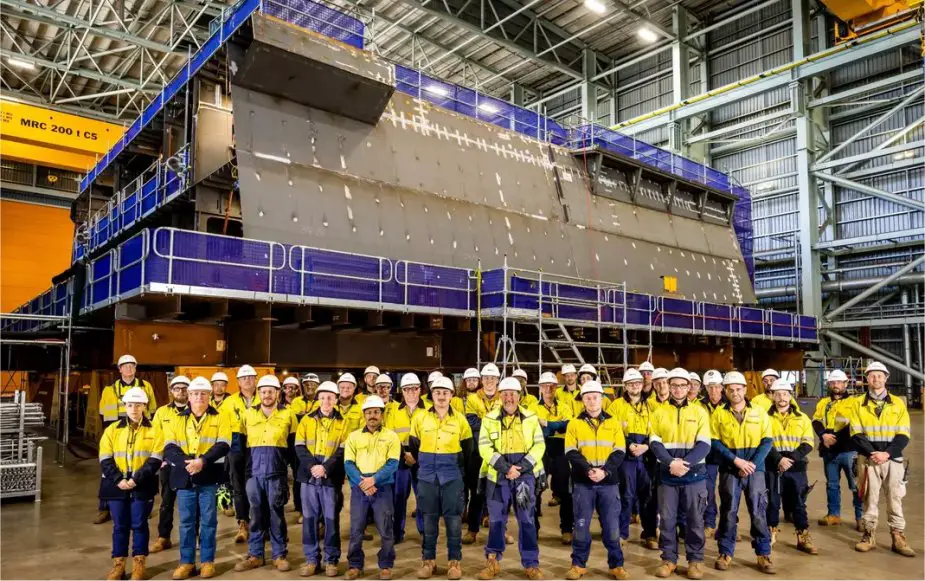Breaking news
BAE Systems completes built of Hunter class frigate's first steel block.
According to a press release published by BAE Systems on August 30, 2022, the first steel ‘block’ has been constructed by shipbuilders working on the Hunter Class Frigate Program.
Follow Navy Recognition on Google News at this link
 First steel block of the Hunter class frigate (Picture source: BAE Systems)
First steel block of the Hunter class frigate (Picture source: BAE Systems)
The largest surface shipbuilding program in Australian defense history continues to make strong progress at the Osborne Naval Shipyard in South Australia.
Shipbuilders are initially manufacturing prototype five prototype ship blocks to test and refine the processes, systems, tools, facilities, and workforce skills ahead of construction of the first Hunter class frigate.
There are 22 blocks in each Hunter class frigate. The first prototype block, known as Block 16, weighs more than 140 tonnes and its construction involved the expertise of 35 different trades, including engineers, boiler makers, welders, fabricators, and project managers.
This first prototype block (without any Hunter class design changes) would form part of the middle of the ship where there are accommodation spaces.
Over the coming weeks and months, the Hunter program will continue constructing the second and third prototype blocks, each more complex than the last.
In mid-2023, the prototyping program will commence the production of additional blocks incorporating the Hunter class design changes, with these blocks actually being used in one of the first three ships.
About the Hunter class frigate
The Hunter-class frigate is a future class of heavy frigates for the Royal Australian Navy (RAN) to replace the Anzac class. Construction is expected to begin in 2022, with the first of nine vessels to enter service in 2031.
The Hunter-class frigate will have a 8,800-tonne (8,700-long-ton) full load displacement and will be approximately 150 metres (492 ft 2 in) in length. The vessel will be capable of sailing in excess of 27 knots (50 km/h; 31 mph) and will have a full complement of 180 crew.
A Saab tactical interface with the Aegis combat interface will be used. The vessel will be able to carry one MH-60R ASW helicopter, and has the ability to host other Australian aircraft such as the MRH90 helicopter.





























